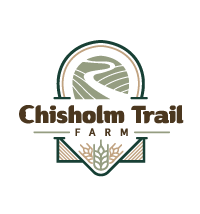Hello, November! Can you believe it? The weather is still beautiful, and just yesterday—November 3, no less—I was out mowing the lawn! It feels surreal, but I’m definitely not complaining. Days like these make winter feel a little shorter, and I’m all for that!
This week, I want to dive a bit deeper into what we talked about last time. If you read last week's post, you’ll remember we chatted about the importance of knowing where your food comes from and how it impacts your health. That topic came up because I saw a recall on McDonald's quarter pounder due to illegal meat imports. Then, over the weekend, I stumbled across an article about the NFL and other celebrities endorsing and promoting Uncrustables sandwiches. Now, I may be a little old-fashioned, but I was never a fan of these, even when my kids were growing up. But when I saw the stats, I was floored: the Minnesota Vikings alone rank #8 in Uncrustable consumption, going through 200 sandwiches per week. Even crazier? The NFL as a whole goes through 80,000 Uncrustables a year, which apparently covers 18 yards of a football field!
In our household, knowing what’s in our food and where it comes from is something we care about deeply. These days, it seems like so many people skip over the ingredient list on packaged food, and I get it—it’s tempting just to grab and go. But over the years, I’ve come to realize just how important that little bit of info can be. Out of curiosity, I looked up the ingredient label for Uncrustables, and wow! I thought it’d be worth sharing a closer look with all of you.
Here are a few ingredients that really stood out to me—enough to make me think twice about picking up one of these sandwiches:
-
Enriched Unbleached Flour: This is your standard flour, but here’s the catch—“enriched” means that nutrients lost during processing are added back in artificially. So basically, the good stuff that was naturally in the flour gets stripped out, and they add synthetic vitamins back in. Not exactly my idea of "wholesome."
-
Ferrous Sulfate and Thiamin Mononitrate: These are forms of salt, with thiamin mononitrate used to replace thiamine lost during processing. It’s a bit unsettling that basic nutrients have to be “added back” because they were removed in the first place!
-
Folic Acid: This is the synthetic form of Vitamin B9, or folate, which is essential for cell growth and DNA production. But here’s the thing—when folate is synthetic, it takes our bodies a lot longer (up to a day!) to convert it to usable B9. Why not just keep the natural version?
-
High Fructose Corn Syrup: Here’s a real red flag for me. This sweetener is a mix of fructose and glucose, and research has linked it to weight gain, diabetes, heart disease, and even liver issues. It’s also completely void of nutrients. The kicker? When I looked up the nutrition info, their website says they swapped out high fructose corn syrup for sugar back in 2017—but it's still on the ingredients list twice, including in the jelly!
-
Dough Conditioners: Often found in processed foods, these are usually distilled monoglycerides and can be sources of hidden trans fats. Not exactly something you’d expect in a simple sandwich, right?
-
Calcium Peroxide: This one acts as a dough conditioner and bleaching agent. Sounds more like something for your laundry than your lunch!
-
Ascorbic Acid: It’s used as a preservative. While it’s less alarming than some of the others, it still feels unnecessary for something as simple as a PB&J.
-
Azodicarbonamide: This is a chemical compound used to condition bread and bleach it. Enough said!
It’s surprising how many unfamiliar ingredients can sneak into something as basic as a sandwich!
All of this—and more—is packed into one tiny sandwich. Some of these ingredients are hard to pronounce, and we’ve all heard the story on high fructose corn syrup. I get that Uncrustables are convenient, but the good news is that these sandwiches are actually super easy to make and freeze at home! If you’re not up for baking your own bread, you can try finding a bakery that offers sourdough or uses specialty or fresh-milled flours. We’re lucky to have a small micro-bakery just 15 minutes away, so I grab sourdough sandwich bread from them. If you’re interested, check to see if there’s a local bakery near you that makes bread with fewer processed ingredients!
In this week’s newsletter, we’ll be sharing tips on how to make these simple, healthier sandwiches at home, plus a quick recipe for homemade jam that only takes 10 minutes! We’ll also share some better peanut butter options to use. If you’d like to get in on this, head over to www.chisholmtrailfarm.com to sign up for our newsletter—it’ll be out on Thursday. And for those of you who enjoy learning visually, I’ll also be posting a video on our YouTube channel, @chisholmtrailfarm, by the end of the week showing just how easy it is to make and freeze these sandwiches!
